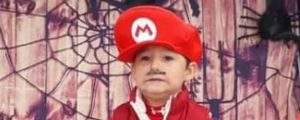This person restores 'unrestorable' old photos and the results are impressive
5 years ago by redial · 1198 Likes · 10 comments · Popular
Report
Comments
Follow Comments Sorted by time
creativedragonbaby
· 5 years ago
· FIRST
Second one seems easy, first one is impressive. The older man's face is back!
8
·
Edited 5 years ago
jmmcclain
· 5 years ago
Have you seen those art restorations? I'm sorta addicted to them
2
jmmcclain
· 5 years ago
Like https://youtu.be/5G1C3aBY62E
2
creativedragonbaby
· 5 years ago
OH yeah that's lovely
1
guest_
· 5 years ago
The term restoration is often used but technically many of these could be called extrapolations or recreations. The human mind and eye is very good at filling in the blanks. In fact you spend a good portion of each day blind. Each time you quickly shift your eyes- to avoid the disorientation such a quick Pam might cause your brain just basically shuts off your eyes and fills in what it thinks a scan of your surroundings should look like. Many things including certain movement often aren’t actually seen by the eye but instead the brain guesses what it should look like and shows you that.
1
guest_
· 5 years ago
Quite a few optical illusions work on this principal as well as the so called “Mormon bubble porn.” We look for patterns and things we recognize and when we are seeing something foreign to us we apply whatever fits the closest. It’s related to the same mechanism that allows us to see things like shadow puppets and shapes in clouds or “faces” on non living objects. It’s also to an extent how we see things like video displays- because our mind takes all the pixels and basically says “oh- that looks like this- so let’s see this.” We even do it with words! We often only read the beginning and end of words to identify them. That’s how those memes with the extra words or transposed letters work. If your mind expects to see a certain thing it will be biased to see that. “Impossible illusions” like shapes that wrap around, or those “moving down a hall” or “this is bigger than that” etc. use this as well- by using cues that a human brain will generally interpret one way to misdirect it.
1
guest_
· 5 years ago
So a human or machine (with sufficient math,) can extrapolate the lost details, often times some reference materials may be required as well, and fill the details in based on where the human mind believes it should be seeing those things. Since faces tend to follow or at least lend them selves easily to mathematic formulas- with minor detail one can generally figure out what a face should look like even if much is missing.
1
Show All
guest_
· 5 years ago
As a fun asides- these mechanisms also relate to cgi. One example is how you can see cgi and believe it to be very realistic, then years or decades later when improved cgi is common and you go back and look again- those graphics you swore were “lifelike” look incredibly phony and poor. Your mind saw these things that were made to make it identify with real objects and projected some of that- it works because you had no frame of reference that was better. But once you see a better version- your mind now can identify the older version as lesser quality.
guest_
· 5 years ago
Likewise- when you watch some huge CGI blockbuster with incredible graphics- but still somehow know it’s phony- this is largely due to details you aren’t even conscious of. They may have spent millions of hours making sure the monster moves realistically- but what about the little details? How about the trees moving, cars shaking, glass breaking, objects or people falling or stumbling from the shocks? Dust and things like this?
guest_
· 5 years ago
When the CG car or space ship makes that cool maneuver and they spent a ton of time making sure the vehicle looks real and it looks like the people are indie- but did they account for how flesh moves under G loads? Clothing? Hair? Sweat or moisture in the eyes? Etc. it’s these seemingly insignificant details we often are not conscious of which cue the mind in that what we are seeing can’t be real. We live in real. While you might not be conscious of every detail of physics- the brain is pretty good at realizing when something it expects to be there isn’t, even if it isn’t aware exactly what that is.












